Africa is one of the most beautiful and fascinating places on earth. It consists of 47 counties and 144 UNESCO world heritage sites. The continent has a large number of famous African landmarks ranging from mountain ranges, rock formations, and waterfalls to ancient buildings.
Africa has everything from the largest hot desert to the longest rivers. To help you figure out which of Africa’s most notable landmarks you should visit I have compiled a list of 25 most popular African landmarks, some of which I have seen and some are still on my bucket list.
In this blog post, we’ll take a look at some of the most famous landmarks in Africa. We’ll explore their history, and find out what makes them so special. So whether you’re planning a trip to Africa, or just want to learn more about the continent, read on!
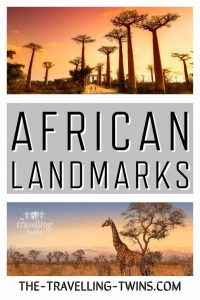
Famous manmade African landmarks
The Great Pyramid of Giza Egypt
The Sphinx and Giza Great Pyramids are the oldest manmade tourist attraction in Africa and the last surviving of the Seven Wonders of the Ancient World. The pyramids dating to over 4 500 years are large enough to be seen from outer space. They were built as gods’ temples and the pharaoh’s tomb filled full of everything that would be necessary for the next world.
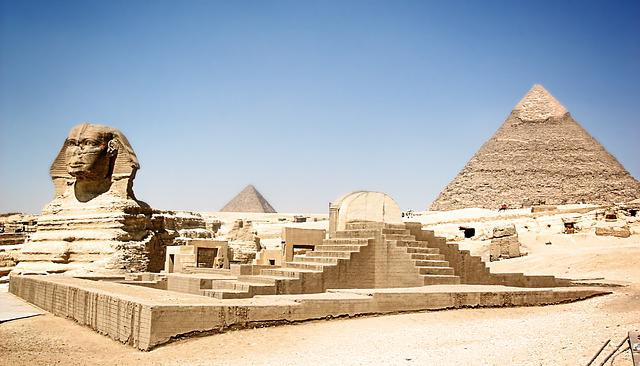
The Great Pyramid of Giza is one of the most iconic structures in the world. Located in Egypt, it is the only remaining wonder of the Seven Wonders of the Ancient World. Built around 2560 BC, the pyramid was originally designed as a tomb for Pharaoh Khufu. It is thought to be the largest Pyramid ever built, and its massive size is truly breathtaking. The exterior of the pyramid is lined with large limestone blocks, and its interior contains an intricate system of rooms and passages. Despite its age, the Great Pyramid of Giza remains an imposing structure and a popular tourist destination. Visitors from all over the world come to marvel at its size and scope, and to learn about its fascinating history.
The Karnak Temple
The Karnak Temple is one of the most famous temples in Ancient Egypt. It is located in the city of Luxor, on the east bank of the Nile River. The temple was built over a period of more than 1,500 years, from around 2055 BC to 30 AD.
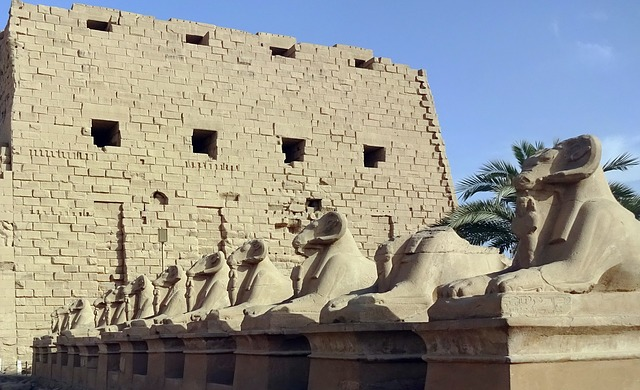
It is dedicated to the gods Amun, Mut, and Khonsu. The Karnak Temple complex includes several temples, chapels, pylons, and obelisks. The Great Temple of Amun is the largest and most important of these. It covers an area of around 200 hectares (500 acres). The Karnak Temple is one of the most popular tourist attractions in Egypt. Every year, it receives millions of visitors from all over the world.
Valley of Kings, Egypt
The Valley of the Kings is one of the most well-known archaeological sites in the world and probably the most famous landmarks in Africa. Located in Egypt, it is the final resting place of some of the most important pharaohs in history, including Tutankhamun and Ramses II. Over the centuries, the Valley has been home to many different tombs and temples, each offering a fascinating glimpse into the past.
The Valley of the Kings in Luxor has such an impressive size it exceeds even the Pyramids. The ancient pharaoh realised that the huge monuments of their crypts serve as an indicator for all thieves in the kingdom. For approximately 500 years from the 16th and 11th century B.C. rocks were excavated and more kept intact until today.
Today, it is a popular tourist destination, and visitors can explore the Valley’s many interesting features, including its hieroglyph-covered walls and elaborately decorated tombs. With its rich history and fascinating artifacts, the Valley of the Kings is an essential stop for anyone interested in exploring ancient Egyptian culture.
Pyramids of Meroe, Sudan
The Pyramids of Meroe are located in Sudan, near the city of Meroe. The site is composed of more than 200 pyramids, which were constructed between the 5th and 3rd centuries BC.
Unlike the better-known pyramids of Ancient Egypt, which were built of stone, the pyramids of Meroe were constructed of brick. Most of the pyramids are in a ruined state, but some still retain their original height. The site also includes a number of temples and tomb complexes.
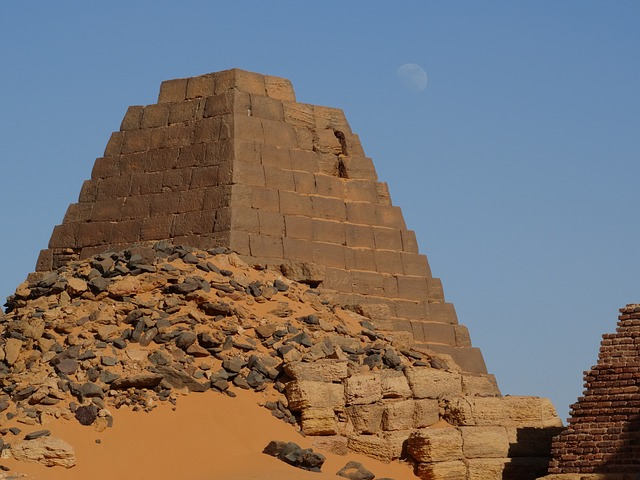
The Pyramids of Meroe provide an important source of information about the kingdom of Kush, which ruled over much of present-day Sudan from circa 10th century BC to 4th century AD.
In 2003 Meroe was added to the UNESCO site list. Although the pyramids are a notable African landmark attraction and high in excitement and appeal they do not receive many visitors. It can be due to its remote position and the numerous economic sanctions imposed on Sudan and the state-run civil war in the country.
Marrakech Medina Morocco
The Marrakech Medina is a complex labyrinth of narrow alleyways, fragrant spice markets, and bustling souks located in the heart of Morocco’s fourth largest city. Founded in the 11th century by the Almoravids, the Marrakech Medina became an important center of trade and learning, attracting scholars and artists from across the Muslim world.
Today, it is one of the largest and best-preserved medieval cities in the world, and a UNESCO World Heritage Site. Visitors to the Marrakech Medina can explore its many mosques and madrassas, or shop for handicrafts and souvenirs in its colorful souks. The Marrakech Medina is also home to some of the city’s most popular attractions, including the Jemaa el-Fnaa square and the Koutoubia Mosque.
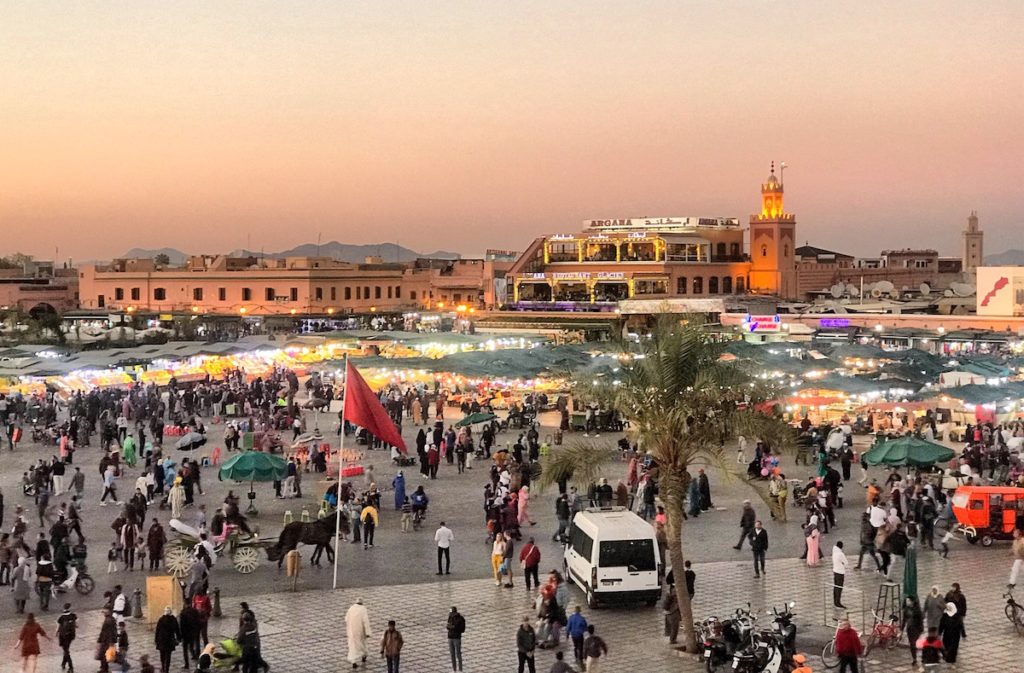
With its lively atmosphere and rich history, the Marrakech Medina is a must-visit for any traveler to Morocco.
Medina in enigmatic Marrakech is an internationally acclaimed heritage site by the UN since 1985. Snake charmers, monkey tamers fortunetellers and colorful spices combine harmoniously with the colorful spices and exotic foreign sounds of the chaotic Djemaa El Fna square.
Kano City Wall
The Kano City Wall is a defensive wall surrounding the city of Kano, in Nigeria. It was built between the 14th and 16th centuries, and is one of the largest city walls in Africa. It is around 18 kilometers long, and up to 11 meters high in places.
The wall has three gates, and is defended by numerous towers and bastions. It was originally built to protect the city from invaders, but today it is a popular tourist attraction.
Visitors can walk along the top of the wall or explore the many shops and markets within its ancient streets. The Kano City Wall is a fascinating glimpse into the history of this ancient city.
Rock-hewn churches of Lalibela,
Town Lalibela in nord-central Ethiopia is world-famous for its 11 rock-hewn churches. This stunning church is unique in that it was not built in a tradition-making way but carved and deconstructed on the living rock of monolithic blocks.
Every church was carved with one single piece of solid rock symbolizing spiritual union and humility. Subterranean passageways and twisting tunnels connect these elegant structures. Since 1060 the churches have been an evangelical pilgrimage destination for Coptic Churches. Over 100,000 Orthodox and Christian pilgrims continue to cross these manmade sights in Africa even today.
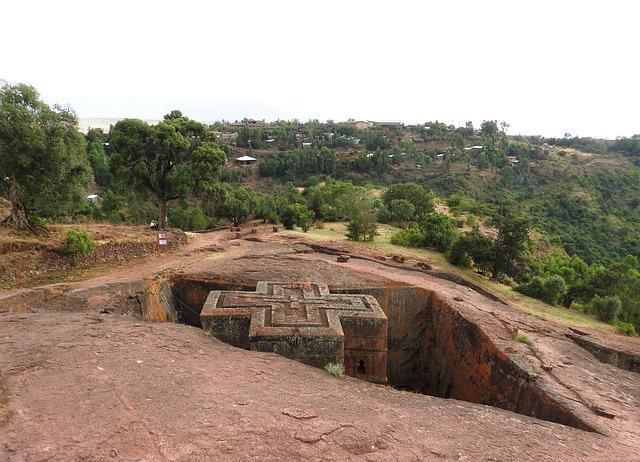
Timbuktu and the Great Mosque of Djenne
Timbuktu is an ancient city in Mali, situated on the edge of the Sahara Desert. For centuries, it was a key trading post for West Africa, and its wealthy merchants built grand houses and mosques of mud brick.
Today, Timbuktu is a UNESCO World Heritage Site, and its most iconic landmark is the Great Mosque of Djenne. The mosque was constructed in the 13th century and is the largest mud brick building in the world. It is famous for its intricate facade, which is covered in intricately carved wooden panels. Every year, the people of Timbuktu gather to celebrate the mudding of the mosque, a tradition that helps to keep the building strong and preserved.
The Great Mosque of Djenne is a testimony to the power of human ingenuity and resilience, and it continues to be an important religious site for Muslims from all over Africa.
The Great Mosque of Djenné is considered one of the greatest feats of the Sudano-Sahelian architecture style. Other landmarks in Mali are the tomb of Askia and The Hand of Fatima.
The most famous natural landmarks in the African continent
Africa is home to some of the most iconic natural landmarks in the world. From the massive sand dunes of the Sahara to the mighty Victoria Falls, the continent is full of breathtaking sights.
Table Mountain National Park South Africa
Table Mountain National Park is one of the most popular tourist destinations in South Africa. The park is home to a variety of landscapes, including forests, mountains, and beaches. Visitors can enjoy hiking, camping, and wildlife watching in the park.
Table Mountain is also a World Heritage Site, as is one of the oldest mountain ranges on Earth that dates back nearly 600 million years. The park offers stunning views of Table Mountain, as well as of the surrounding city of Cape Town. Visitors can take a cable car to the top of Table Mountain, or hike to the summit.
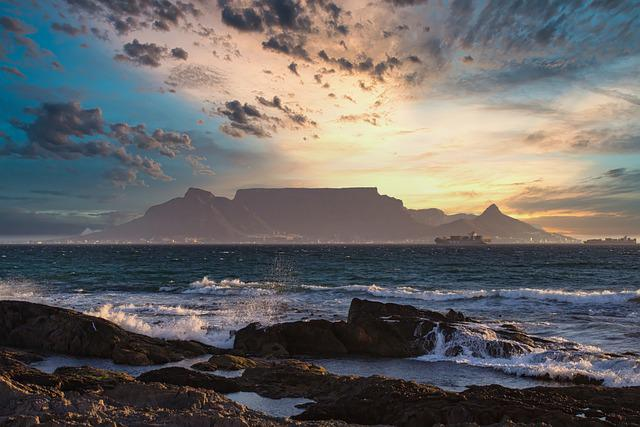
There are numerous trails that wind through the park, providing visitors with a chance to explore the diverse landscapes. Whether you’re looking for an adventurous hike or a relaxing day in nature, Table Mountain Park is sure to provide an enjoyable experience.
Table Mountain was voted one of the Seven Wonders of the World in 2012 and endemic species include The elusive ghost frog and elephant-like rock rabbits that roam Cape Town. The mountains are still in existence.
Kruger National park
Kruger National Park is one of the largest game reserves in Africa. It covers an area of nearly 20,000 square kilometers and is home to a wide variety of wildlife, including lions, elephants, rhinos, and buffalo. In addition to its large size, Kruger National Park is also known for its diverse landscape, which includes savannahs, woodlands, and mountains. Visitors to the park can enjoy a number of activities, including game drives, safari walks, and bush camping.
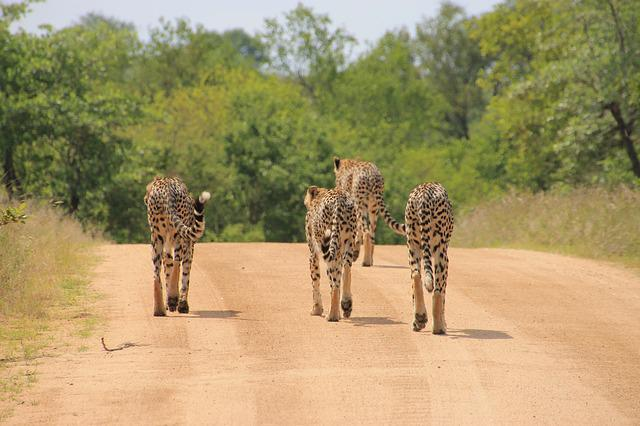
Whether you’re looking for an African adventure or a simply a chance to see some of the world’s most magnificent animals up close, Kruger Park is a perfect place to visit.
The Nile River
The Nile River is Africa’s longest river at approximately 6,752 km (4,264 mi) It flows through eleven countries with an average output of 3.1 million litres.
The world contains a huge number of historical monuments left behind by civilizations that made Africa their home over the past many hundred years. From ancient pyramids and castles to monuments and antiquities the sites give glimpses into the past.
The river’s fertile banks have supported the growth of crops and settlements for millennia, and its waters have been used for transportation, irrigation, and power generation.
Today, the Nile River remains an important economic resource for the countries it traverses. Its waters are used for irrigation, industry, and navigation, and its rich soil continues to support a variety of crops. As a result, the Nile River continues to play a vital role in the development of the region.
Fish River Canyon Namibia
The Fish River Canyon is one of the most striking features of Namibia’s landscape. The canyon is 160 kilometers long and up to 27 kilometers wide in places, and it plunges to a depth of 550 meters. The Fish River Canyon is the second largest canyon in the world and the largest on Africa’s continent.
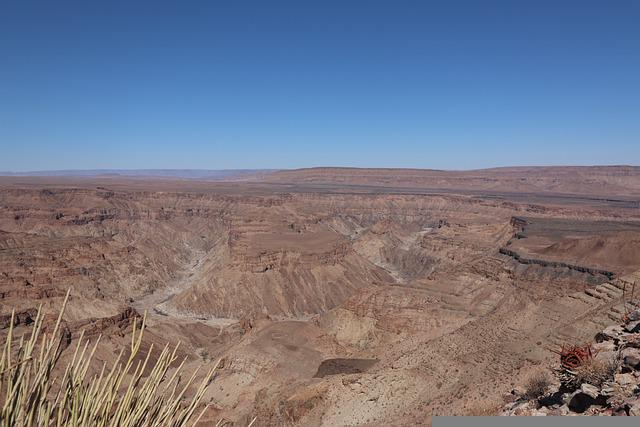
The Fish River is the longest river in Namibia, and it has carved out this impressive canyon over the course of millions of years. The canyon is a popular destination for hiking and camping, and its rugged beauty is truly breathtaking. In 1985, the Fish River Canyon was declared a national park, ensuring that this unique natural wonder will be preserved for future generations to enjoy.
It was declared a monument to the African continent in 1962 and is now the global 2nd most popular attraction throughout Namibia region. It is located in the Ai-Ais Richtersveld Transfrontier Park.
Okavango Delta Botswana
The Okavango Delta is a massive inland river delta in northern Botswana. Every year, the Okavango River spills over its banks and floods the plains, creating one of the largest wetlands in the world. The resulting wetland is a haven for wildlife, including elephants, hippos, lions, African wild dogs and hundreds of species of birds.
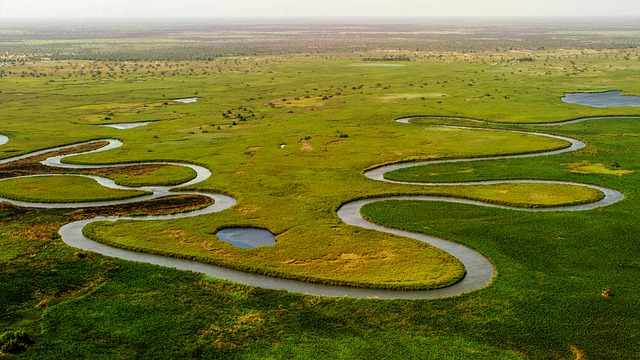
For many animals, the Okavango Delta is the last remaining refuge from humans and development. As a result, it is vital to protect this unique ecosystem. Fortunately, conservation efforts are underway to ensure that the Okavango Delta remains a wild and pristine place for generations to come.
Sahara Desert of North Africa
The Sahara Desert is the biggest hot desert in the world. The very close location of the sun, the poor distribution of rainfall and the low humidity make this place a hot spot not only in Africa but on the other. The Sahara landscape isn’t only a mixture of sand dunes and oases however contains mountains and extinct volcanoes.
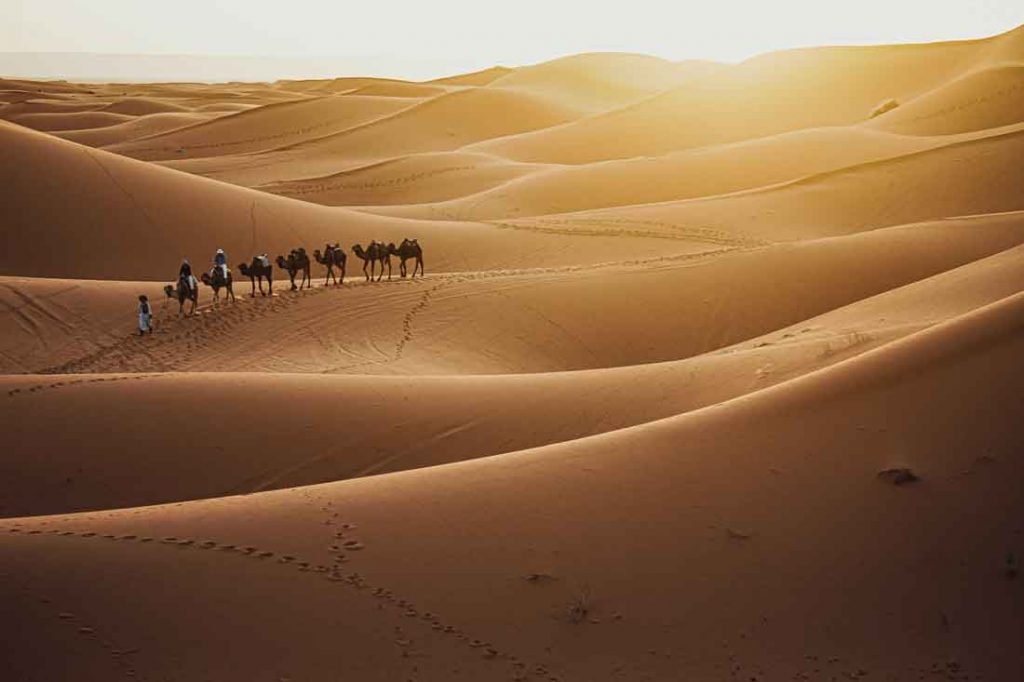
The Sahara Desert is the world’s largest hot desert and covers about 9 million square kilometers, making it almost as large as China or the United States. About two-thirds of the Sahara is located in North Africa, with the rest in West Africa.
Despite its size, the Sahara only has about 2 million inhabitants, most of whom are nomadic herders who move with their animals across the desert in search of pastureland. The Sahara is home to a number of iconic animals, including lions, elephants, and camels. It also has a number of unique plants, such as the oasis palm, which can store water in its trunk to survive long periods of drought.
The Sahara is a fascinating place, and its vast expanses of sand have been the backdrop for many Hollywood films.
Baobab Avenue, Madagascar
Baobab Avenue is one of the most unique sights in Western Madagascar. The avenue is lined with dozens of gigantic baobab trees, some of which are over 800 years old. The giant trees provide a welcome respite from the heat of the day and are a popular spot for picnics and leisurely walks.
The trees stand up to 30 metres (100 feet) in height. The dimensions of these giant trees reaches a diameter of 11 metres (35 feet) and a circumference of 50 metres (160 feet).
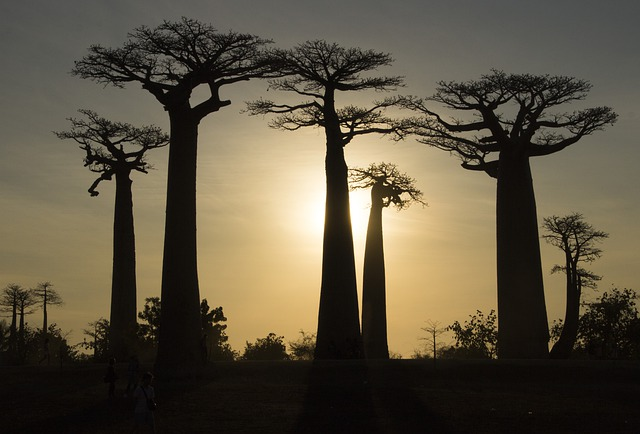
The baobabs are also an important source of food and shelter for many animals, including lemurs, bats, and snakes. In addition to their ecological importance, the baobabs are also a symbol of Madagascar’s history and culture. For centuries, they have been revered by the Malagasy people as objects of great power and mystery.
Today, Baobab Avenue is one of Madagascar’s most popular tourist destinations, drawing visitors from all over the world.
Ngorongoro Crater Tanzania
The Ngorongoro crater is the largest intact volcano caldera on the earth. It spans 19 km (4.89 miles) in depth and has a depth from the edge of the water to the floor 600 feet.
The Region has a protected wilderness and. It is a sanctuary for a great number of 25,000 wild creatures including lions hyenas, wildebeest zebras, rhinoceros and elephant
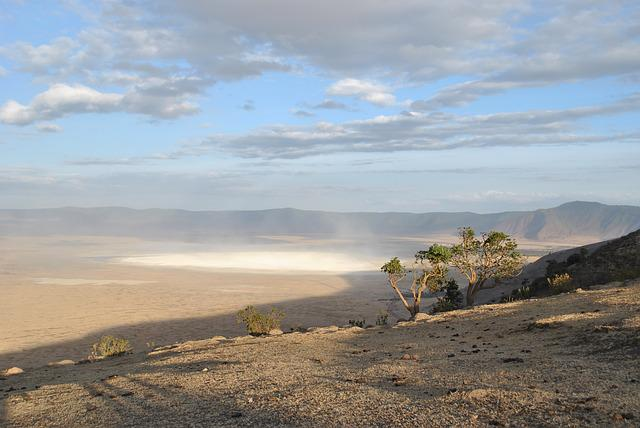
Visitors can take safari drives around the crater floor, spotting elephants, lions, zebras, and many other animals in their natural habitat. The Ngorongoro Crater is also a great place to go birdwatching, with over 500 different species of birds living in the area. Whether you’re an animal lover or an avid birdwatcher, the Ngorongoro Crater is sure to delight and amaze.
Mount Kilimanjaro Tanzania
Mount Kilimanjaro, 5895 meters above sea level, is the highest free-standing mountain and one of the Seven Summits. It is located in Tanzania, near the Kenyan border.
Mount Kilimanjaro is a volcano, and is composed of three cones: Kibo, Mawenzi, and Shira. Kibo is the highest cone and the only one that is still active.
Mount Kilimanjaro is one of the most popular tourist destinations in Africa, and people from all over the world come to climb it. The mountain has various ecosystems, including rainforest, alpine forest, heathland, and moorland. The summit of Mount Kilimanjaro is known as Uhuru Peak, and it is the highest mountain on the African continent.
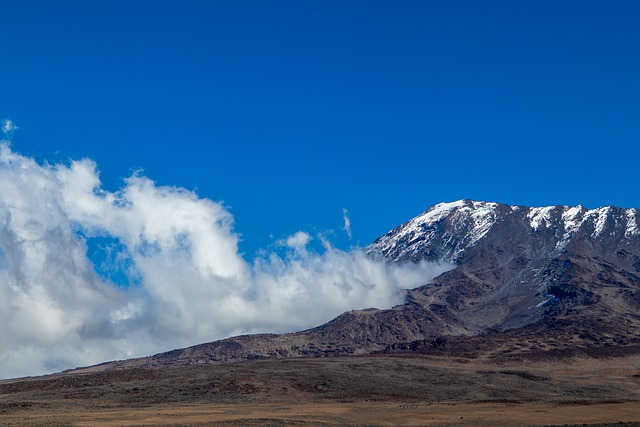
The region offers an assortment of diverse habitats in the mountain. Other important landmarks in Tanzania include Ngorongoro Crater Serengeti National Park and Tarangire National Park. In its shadow, it was a special experience walking amongst this natural wonder.
Victoria Falls Zimbabwe – Seven Natural Wonders of the World
Victoria falls are not the widest or highest waterfall but are simply the world’s largest falls Its as well the most famous Natural Landmarks in Africa. It was rediscovered in 1855 by the famous British explorer David Livingstone who gave it the name of Queen Victoria.
Victoria Falls is one of the Seven Natural Wonders of the World, and it is easy to see why. Straddling the border between Zambia and Zimbabwe, the falls are nearly two miles wide and plunge 354 feet into the Batoka Gorge below. The Zambezi River, which fed by rainfall and runoff from as far away as Angola, thunders over the edge, creating a plume of spray that can be seen for miles around. Victoria Falls National Park is truly a sight to behold, and a visit to this majestic waterfall is an unforgettable experience.
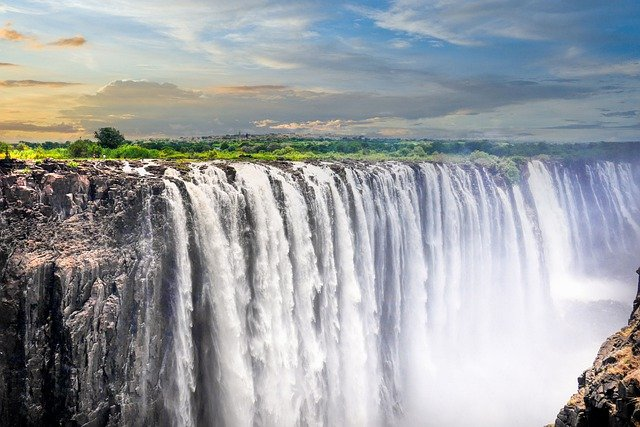
At the Victoria waterfall is one of the unique phenomena known as the moonbow which is basically just the rainbow at the night. The Falls have been included among the Seven Wonders of the World and are Located in Zimbabwe and Zambia. It is one of the seven natural wonders of the world with the largest waterfall in the world located in the most populous Province of Zimbabwe and Mo.
Zambezi River
The Zambezi is one of Africa’s great rivers, flowing 4,000km from its source in the highlands of north-western Zambia to the Indian Ocean. Along the way, it forms the border between Zambia and Zimbabwe before carving out a spectacular gorge in southern Zambia and flowing through Mozambique to reach the sea.
The Zambezi is a natural habitat to a diverse range of wildlife, including elephants, hippos, crocodiles and a variety of fish. It is also an important resource for people living along its banks, providing water for agriculture and hydroelectric power. As a result, the Zambezi River is both a vital part of Africa’s natural heritage and an important economic resource.
Virunga Mountains, Rwanda Uganda, and D.R Congo
The Virunga Mountains are roughly 590 feet high and stretch around the borders of the Congo Republic Ruanda and Uganda. With only over 1,000 of them remaining in the wild mountain gorillas are amongst the world’s most endangered species. If you make this, you’re guaranteed unmatched hypnosis that you’re certain will leave its strong and lasting mark.
The mountain itself is nothing extraordinary but its inhabitants are a rare treat worthy of the imagination of a few adventurous travelers. I’m speaking of the mysterious mountain gorillas. See the List of European landmarks.
The Great Migration across the Serengeti National Park+ Masai Mara
Every year, over two million Wildebeest, Zebra, and Thomson’s gazelle migrate across the Serengeti National Park and the Masai Mara in Kenya and Tanzania. This journey, known as the Great Migration, is one of the most spectacular natural phenomena on earth. The animals travel in search of new grazing grounds, following the rains as they move from one region to another.
The journey is fraught with danger, as the animals must brave crossing crocodile-infested rivers and Avoid predators such as lions, cheetahs, and hyenas. However, the rewards are great; by migrating, the animals are able to find new sources of food and avoid competition for resources. The Great Migration is truly a wonder of the natural world.
The Serengeti National Park has a range of 14,750 km2 (5700 sq mi) of savannah forest and grass land. The Maasai Mara game park is an important wildlife habitat. It is world-renowned for its large numbers of African leopards, bush elephants and lions.
The Virunga Mountains stretch along the borders of Uganda, Rwanda, and the Democratic Republic of Congo (DRC)
Sossusvlei Namibia
Namib-Naukluft National Park has one of the largest dunes in the world. Sossusvlei is a vast white clay and saltpan in the southern reaches of the Namib Desert. The Namib is believed to date back 55 million years.
This is believed to be the old desert on this planet. Dune 7 holds the title of the World’s highest dune – standing 1,576 feet high. The dunes were created from the transport of materials from thousands of kilometers away by air and wave currents. These dunes are of quartz lava that has melted off of the coast.
Masai Mara National Park Kenya
Kenya hosts one of the best African landmarks the Masai Mara National Park. The wildlife complex borders the Serengeti National Park in the southwest part of Kenya. In addition to rolling plains and rolling mountains and highlands there is a vast number of wetlands and vegetation and an incredible number of bird-based habitats are also present. Just like the infamous great wildebeest migration Masai Mara is a popular tourist destination because it offers abundant wildlife of African Animals
Skeleton Coast – Namibia
The Skeleton Coast is one of the most remote and inhospitable regions on earth. Named for the bleached bones of its many shipwrecks, it is a place where the desert meets the sea.
Desolate and unforgiving, the Skeleton Coast is home to some of the world’s largest colonies of seals and penguins. It is also one of the only places on earth where you can find bird species that exist nowhere else.
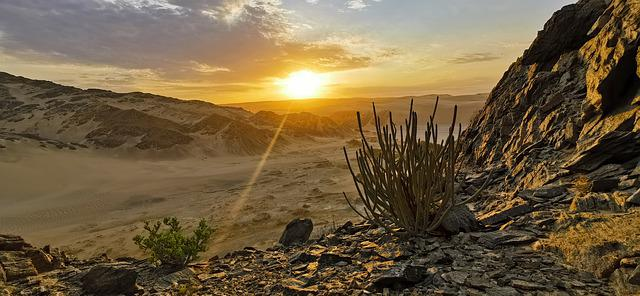
But while the Skeleton Coast may be a harsh and seemingly uninhabitable place, it is also a place of great beauty. The endless stretch of sand dunes, dotted with bones and driftwood, is eerily beautiful. And the sight of thousands of seals and penguins huddled together in the cold is truly breathtaking.
For those who are brave enough to venture into this remote and wild place, the Skeleton Coast is an unforgettable experience.
Most Famous Landmarks of Africa – Pin it
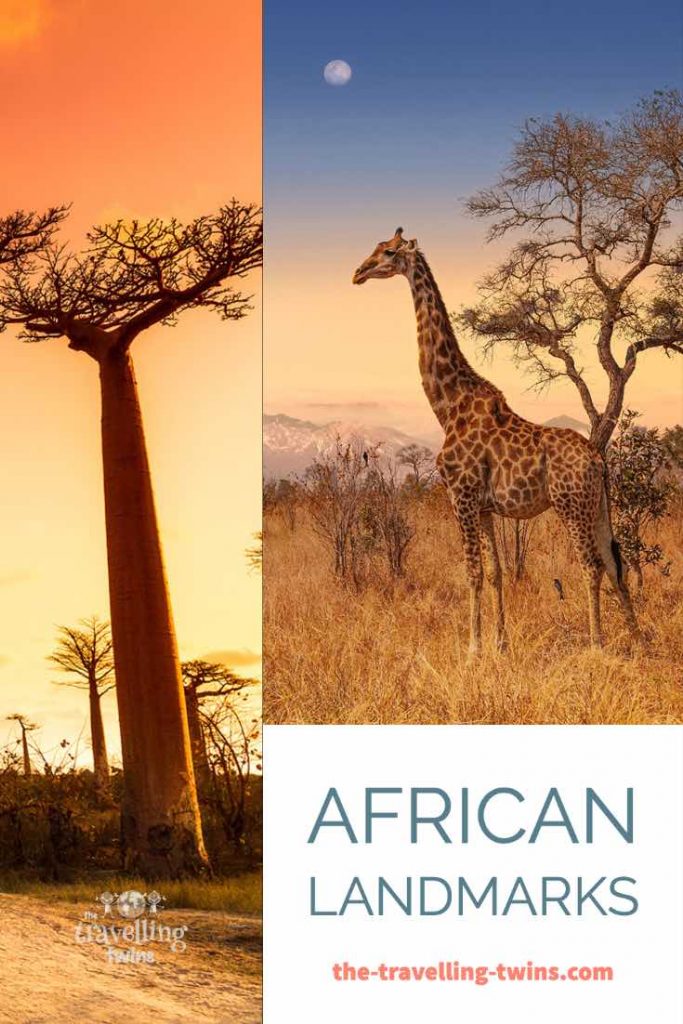
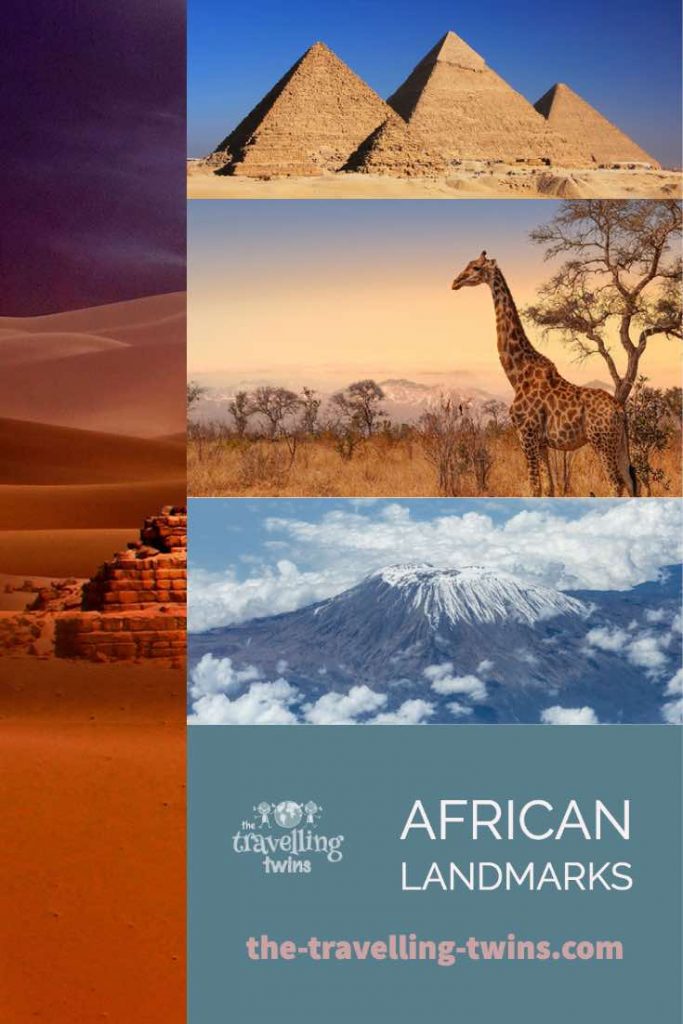
Privacy Policy Disclaimer
This website uses affiliate links for income and support.
If you like our website, please consider using these links. You will be directed to the vendor, and we will get a small commission on your purchase price at no increased cost to you.
We have researched facts stated here as far as practicable but please check anything critical before committing your time and money. We do not claim any special knowledge or expertise, and we are not consultants for our readers.